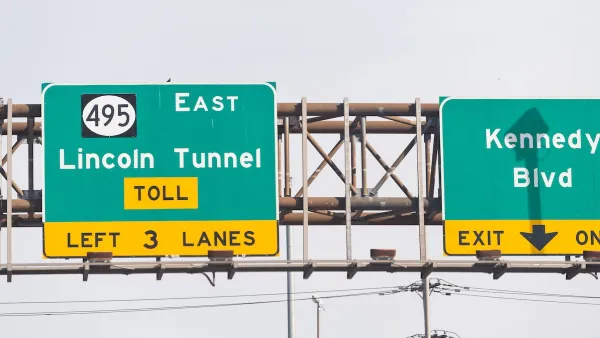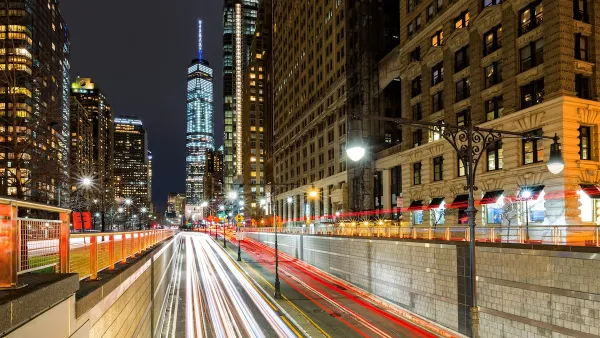Although the holidays cause millions more drivers to hit the road, delays in traffic may also stem from the congestion of goods movements by truck, both locally and across the country.
As Joseph Kane and Adie Tomer write for the Brookings Institution, "the 100 largest metro areas transport $16.2 trillion in products annually—or nearly 80 percent of all the country’s freight. Even more critically, though, over two-thirds of these goods are carried by trucks, which often traverse multiple states on their long-distance journeys. With anything from metals and machinery to electronics and textiles riding our interstates all day and night, regional markets depend on an efficient freight network to forge economic connections with one another, yet their local congestion can restrict this movement."
Looking at the major metro areas with some of the worst congestion, such as New York City, Los Angeles, Chicago, and elsewhere, traffic chokeholds "not only slow down flows in their own regions, but also dampen economic exchanges across all corners of the country, including those across multiple types of modes such as rail. As a result, congestion in one market can hurt regions hundreds or even thousands of miles away." Kane and Tomer posit that instead of "spreading investments evenly across the country or limiting attention to individual projects, it’s time to tailor our freight improvements in light of location-specific concerns."
FULL STORY: Relieving Congestion to Boost Metro Trade

National Parks Layoffs Will Cause Communities to Lose Billions
Thousands of essential park workers were laid off this week, just before the busy spring break season.

Retro-silient?: America’s First “Eco-burb,” The Woodlands Turns 50
A master-planned community north of Houston offers lessons on green infrastructure and resilient design, but falls short of its founder’s lofty affordability and walkability goals.

Delivering for America Plan Will Downgrade Mail Service in at Least 49.5 Percent of Zip Codes
Republican and Democrat lawmakers criticize the plan for its disproportionate negative impact on rural communities.

Test News Post 1
This is a summary

Test News Headline 46
Test for the image on the front page.

Balancing Bombs and Butterflies: How the National Guard Protects a Rare Species
The National Guard at Fort Indiantown Gap uses GIS technology and land management strategies to balance military training with conservation efforts, ensuring the survival of the rare eastern regal fritillary butterfly.
Urban Design for Planners 1: Software Tools
This six-course series explores essential urban design concepts using open source software and equips planners with the tools they need to participate fully in the urban design process.
Planning for Universal Design
Learn the tools for implementing Universal Design in planning regulations.
EMC Planning Group, Inc.
Planetizen
Planetizen
Mpact (formerly Rail~Volution)
Great Falls Development Authority, Inc.
HUDs Office of Policy Development and Research
NYU Wagner Graduate School of Public Service





























